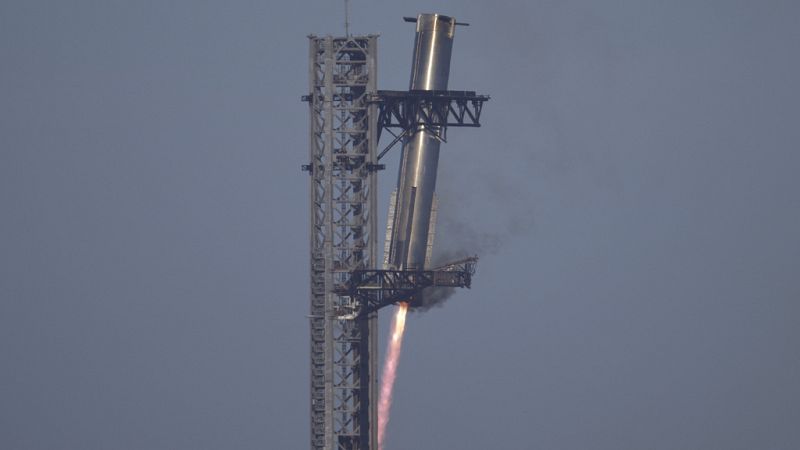
SpaceX launched its Starship rocket on its latest test flight on Thursday, but the spacecraft broke apart following a thrilling booster catch back at the pad.
Elon Musk's space company said the Starship had a "rapid unscheduled disassembly".
The spacecraft's six engines appeared to shut down one by one during ascent, with contact lost just 8 1/2 minutes into the flight.
"Teams will continue to review data from today's flight test to better understand root cause," SpaceX said in a social media post.
"With a test like this, success comes from what we learn, and today’s flight will help us improve Starship’s reliability".
The spacecraft was a new and upgraded model making its debut. It was supposed to soar across the Gulf of Mexico from Texas on a near loop around the world similar to previous test flights.
A minute before the loss, SpaceX used the launch tower's giant mechanical arms to catch the returning booster, a feat achieved only once before.
The descending booster hovered over the launch pad before being gripped by the pair of arms dubbed chopsticks.
'Bummed out about the ship'
The thrill of the catch quickly turned into disappointment for not only the company, but the crowds gathered along the southern tip of Texas.
"It was great to see a booster come down, but we are obviously bummed out about ship," said SpaceX spokesman Dan Huot. "It’s a flight test. It’s an experimental vehicle," he added.
The last data received from the spacecraft indicated an altitude of 146 km and a velocity of more than 21,000 km/h.
Musk said a preliminary analysis suggests leaking fuel may have built up pressure in a cavity above the engine firewall.
Fire suppression will be added to the area, with increased venting and double-checking for leaks, he said via X.
It was the seventh test flight for the world’s biggest and most powerful rocket.
NASA has reserved a pair of Starships to land astronauts on the moon later this decade. Musk’s goal is Mars.
on its first test flight, successfully placing an experimental satellite thousands of kilometres above Earth.
The first-stage booster, however, was destroyed, missing its targeted landing on a floating platform in the Atlantic.


Post a Comment
0Comments